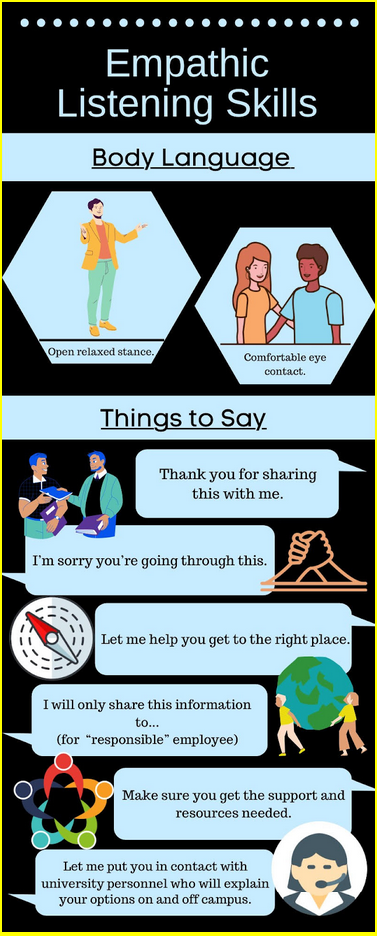Trauma. Such a common term or topic, but yet it’s hard to define because it impacts each of us so differently. By now, many people are familiar with the ACE study which revealed the long-term health impacts of trauma. For more information on the ACE study, click here. Not only does trauma and abuse impact our physical health, but it can also impact our ability to learn and engage with educational opportunities.
*Source: https://www.cdc.gov/violenceprevention/acestudy/about.html
Trauma can be defined as any experience in which a person’s internal resources are not adequate to cope with external stressors (Hoch, Stewart, Webb, & Wyandt-Hiebert, 2015). Traumatic experiences can be single incidences or pervasive and ongoing. Trauma can impact individuals, families, multiple generations, and communities as a whole. As humans, we all differ in how we respond to a potentially traumatic life experience. While one person may be unable to cope with an incident, others may be able to. Due to this, we cannot define trauma solely by our perception of the incident, and we can’t tell survivors of trauma how they “should” move forward. What we can do is create trauma-informed environments that are designed with intention and awareness so that survivors can be given a fair opportunity to benefit from our institution.
This site aims to serve the kauhale as a resource and as a catalyst for dialogue on how we as a college can work to become trauma informed.
“Trauma informed care embraces a perspective that highlights adaptation over symptoms and resilience or pathology” Elliot, Bjelajac, Fallot, Markoff, & Reed, 2005
- Safety: Physical and Emotional
- Does campus feel safe and is security easily accessible?
- Is it easy to physically navigate campus? Do people get lost or confused often?
- Are buildings, bathrooms, and exits clearly marked?
- Are reception areas welcoming?
- Is the first contact with students welcoming, respectful, and engaging?
- Do students receive clear and accurate information about each task they’ll encounter while in college? Are rationales clear or is the process convoluted and confusing?
- Are staff attuned to signs of distress and trained to respond in a trauma-informed way?
- Trustworthiness
- Clear communication about processes and what is expected of students.
- Are professional boundaries maintained? Do staff and employees establish healthy boundaries that don’t send confusing messages about how they can support students?
- Are students given choices or opportunities to engage in conversation as they navigate our system and engage in their courses?
- Choice and Control
- Does a student get to choose how they’ll be contacted by members of the college?
- How are they informed about choices, options, and student rights?
- Is the student code of conduct consistently referenced along with information regarding processes and student rights?
- Collaboration
- Are there methods that ensure that students from the most vulnerable populations (foster youth, veterans, non-traditional students, etc) are represented on student boards?
- Does the campus have a culture of “doing with” rather than “doing for”?
- Does the campus regularly communicate with and empower students to see each step in the education process as a choice they are making?
- Are opportunities for student voice and engagement clearly identified to the student body as a whole?
- Empowerment
- Are students empowered to hold knowledge about how planning and decisions are made on campus?
- Are students accomplishments, strengths, and skills regularly recognized?
- Does every level of the institution portray realistic optimism about student capacity to succeed?
What we often see as the symptoms of trauma or PTSD are often maladaptive or misapplied survival skills. These skills often kick in when we are put into survival mode. After the traumatic incident, our brains can struggle to turn off the survival mode response or it can turn it on when triggered. *All symptoms listed below are just possibilities. Students may have a few or many of these flags. Recognizing the impact of trauma, and the signs that someone has been impacted will help faculty/staff maintain the values of trauma informed care.
Trauma can impact our ability to learn
- Reduced curiosity/flexibility
- Inhibits exploration
- Daily baseline can be a low state of fear
- Need predictability to lower fight/flight/freeze response
- Focusing, retaining and recall may be impacted
- Things such as deadlines and projects may result in activation of the stress response
- Challenges with emotion regulation (this can result in irritability, dissociation, etc)
- Struggles with self-esteem and risk-taking (trying something new, or being vulnerable)
Trauma can impact relationships
- Affective attunement (matching affect/emotions) can alleviate conscious/unconscious fear
- Increased withdrawal and isolation (may be hesitant to engage with groups)
- May not feel safe creating new relationships or sharing personal information
- May have difficulty understanding what healthy boundaries are
- May be struggling with continued unhealthy relationship dynamics
Trauma can impact behaviors
- Rigidity in perceptions
- Anxiousness
- Possible Agitation/Hypervigilance
- Need to sit in a specific location in the room
- May seem distant or spacey
- May be forgetful or seem overwhelmed
Creating classroom experiences that are grounded in the values of trauma-informed care can play a significant role in student success. By reviewing the values and applying the concepts to your class you will be showing students who have experienced trauma that they are welcome and can succeed. In addition to implementing the core values, here are a few more resources/things to consider.
General Recommendations:
- Know your campus and confidential resources in case someone makes a disclosure.
- Know your reporting responsibilities
- Know your limitations (What can you keep private, what are you comfortable discussing, at what point should you refer to resources).
- Manage your biases (we all have them) and remember what your goal of being a support person is (supportive ear, sharing effective coping strategies, referring to campus or community resources).

Assignment/Course Content Considerations
- Many courses cover content that may trigger students. This is completely okay and is of course necessary in particular subjects. When introducing potentially triggering content, please consider the following:
- Trigger Warnings: Give a general overview of the content that will be covered prior to covering it.
- Trigger warnings that happen immediately before the content is presented is not sufficient. This puts students in the position of outing themselves if they decide to disengage or leave. *Remember that the value of choice and control are key to engaging all learners.
- Ideally, general topics can be listed in the course syllabus. This is a good time to notify students of what’s to come. At the beginning of the course you can discuss what options students have if they end up finding any of the course content emotionally difficult. Remind students of the available options throughout the semester. Give a trigger warning 1-2 classes ahead of when the content will be presented and make yourself available to discuss this with students.
- If you don’t pull off a trigger warning in advance, do a more in depth explanation of the content that allows you to put the issue into perspective. Discuss what emotions may arise, how people may experience these emotions (mentally or physically), and how they may occur in the moment or at a later time. Note the importance of self-care during and after the assignment.
- Create alternative assignments: Consider creating alternative assignments or ways of completing assignments when covering potentially traumatizing content.
- If the potentially triggering content is necessary (e.g. Assigning homework on the cycle of abuse in a women studies course), consider allowing students to pick which way they will engage with the course content. Can they choose to work individually or as a group? Can they choose between readings so that they can pick the one that is the most comfortable? How do you discuss their options around self-disclosure when completing a self-reflection or an assignment that is personalized to their lived experience/community/culture?
- If the potentially triggering content is not necessary: Give choices between readings/videos. Allow students to choose topics when possible. Remind students that assignment outcomes need to be met and so choosing something that will sidetrack them from completing the work may be counterproductive.
- Trigger Warnings: Give a general overview of the content that will be covered prior to covering it.
Integrate Wellness and Self-Care into the Classroom
- Use mindfulness exercises from the MWS Faculty/Staff Resource page to model and integrate the benefits of self-care and remaining present on a regular basis. Mindfulness activities can do wonders when implemented regularly (not just before a test).
- Introduce breaks as a way of self care.
- Share a short mindfulness/wellness clip during a break.
- When discussing content that may be triggering, normalize the emotional response that students may have. Integrate the recognition of emotional responses into course discussions as a way of modeling how to cognitively hold distressing content while remaining present and productive.
- Integrate check in strategies such as “1 thing good, 1 thing new” into your courses at the beginning of the semester.
- Use AVID techniques and strategies to create a high engagement environment.
- Use concepts from the Ka’ao model to help students put meaning to how their learning experiences further their journey. This little moment of connection and integration will help keep difficult content in perspective and help ground the students.
- Encourage students to participate in campus activities for extra-credit.
*If a student is struggling, check in with them in private during a break or after class. Review the How to Refer a Student page for additional resources on How to Support a Student in Distress or How to Respond: Emotional Crisis vs. Communication Issue.


